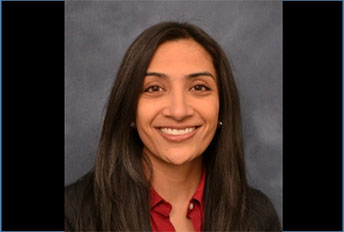Flu Fighter: Dr. Anita Patel

Dr. Anita Patel is one of CDC’s key problem solvers working to protect the United States from a future influenza pandemic. Her responsibilities include making sure the nation has strategies in place for medical countermeasures to be able to treat sick patients and protect health care workers. Dr. Patel says the 1918 flu pandemic is a sobering reminder of the dangers of flu. “Learning from history allows us to plan for the possible range of impacts, and move the needle in preparedness.”
Being a Flu Fighter
It takes a lot of smarts, energy, and fortitude to take on each day the way Dr. Anita Patel does. She is Senior Adviser and Lead for Pandemic Medical Care and Countermeasures with CDC’s Influenza Coordination Unit. In that role, Dr. Patel leads a team that helps to make sure the nation has access to medicine and other supplies like ventilators to treat sick people during a pandemic, and the proper equipment to protect doctors, nurses, and health care workers caring for their patients. There is a lot of coordination that goes into those efforts. “We create solutions to improve timely access to various medical countermeasures during a response. This requires having safe and effective countermeasures, available supply, the regulatory and legal mechanism to use products, and strategies to optimize distribution. We also have to ensure people know where to go or how to get products, and having a way to monitor and assess how medical countermeasures are used,” Dr. Patel says.
Dr. Patel and her team are constantly laying the groundwork for responding to a pandemic. “Ideally, we don’t want to introduce a new idea during a response. Seasonal influenza allows us an opportunity to introduce and refine our ideas, systems, and platforms that can be scaled up, and are in place when a pandemic occurs.” For example, there were reported shortages of influenza antiviral medicine during this past flu season, says Dr. Patel. Patel and her team were able to help craft a solution that avoided the potential need to take influenza antiviral drugs from the federal stockpile reserved for public health emergencies. By working with the commercial supply chain, they were able to determine the shortages of antivirals were occurring only among generic products, and there were plenty of brand name antiviral drugs available. Dr. Patel and her team were able to work with the manufacturer to improve access to the needed medication. Monitoring the supply chain in this way is something that her team has done since the 2009 H1N1 response, and they continue to do this every season knowing that supply chain visibility will also be needed during a pandemic.
Technology, and modern shifts in how we do things, also influence her team’s work. Dr. Patel says every day systems used, like retail pharmacy and direct to consumer delivery, are being explored to help optimize how public health medical countermeasures may be distributed during a response.
Planning and Preparation are Critical; Challenges Remain
Asked what she would like to see before the next pandemic, Dr. Patel says “better therapeutics and better personal protective equipment (PPE)” which includes respirators, masks, gowns, gloves, and face shields. Right now, Dr. Patel’s team is focusing on how to help ensure that health care workers will come to work during a pandemic. “We need to have them protected. We’re not going to have vaccines available right away, and antiviral drugs are going to be reserved for treatment. The only thing we’ll have initially to protect health care workers is personal protective equipment. The volume of PPE we’ll need is astronomical – it’s a humbling challenge,” emphasizes Dr. Patel. That’s where her inquisitive nature and problem solving acumen come in. “The levels of protection medical workers need are different. So how do we ensure that based on your role that you are given the right level of protection? What else can we do? Maybe it’s not something you wear, maybe it’s a barrier or other strategy.” It is important work that Dr. Patel is determined to tackle.
Great challenges remain in preparing for a future flu pandemic. During a response Dr. Patel also leads the Medical Countermeasure Task Force, “We are a group of experts from across the agency that sit in one place so we can cross-coordinate and make decisions quickly during a response.” Dr. Patel takes pride in knowing elements of her team’s work are used for seasonal flu, but also could be used in other health emergencies. “Everything we do is to support the needs of flu fully knowing, if needed, some of these tools and concepts could be leveraged for other responses.” For Dr. Patel, it all comes down to preparation, concluding “all the planning that we are doing is meant to be used in a response. We don’t create a plan and throw it on a shelf. All of our efforts in preparedness are what allows us to be ready during a response.”
